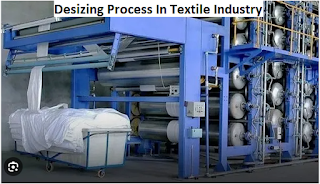Understanding Textile Water Pollutions: Effects, Causes and Remedies
Textile Water Pollution
Textile water pollution refers to the contamination of water bodies, such as rivers, lakes, and oceans, as a result of activities related to the textile industry. This form of pollution arises from the various processes involved in textile manufacturing, from the initial stages of fiber production to the final product finishing. Textile water pollution is a significant environmental concern due to its wide-ranging ecological and human health impacts.
Here are some key aspects of textile water pollution:
Dyeing and Printing:
- Industrial pollution is an alarming occurrence and the textile industry cannot shy away from its responsibility. Unfortunately, if we look at the facts too closely, then we can see the harm the industry brings to the environment. Even though much of a change in approach is underway, globally but the risk of environmental pollution is looming at large.
Textile dyeing and finishing are some of the most polluting manufacturing processes on the planet, responsible for 3% of global CO2 emissions (predicted to rise to 10% by 2050) and over 20% of global industrial water pollution. So, keeping these alarming numbers in mind each of us needs to do our bit to take care of the planet. One of the major contributors to textile water pollution is the dyeing and printing process. Textile dyes and chemicals are used to impart color and design to fabrics. These chemicals often contain toxic substances, heavy metals, and volatile organic compounds (VOCs), which can leach into water sources during the dyeing and printing process.
Chemical Use:
Throughout textile manufacturing, a variety of chemicals are employed for processes such as pretreatment, scouring, bleaching, and finishing. These chemicals can include detergents, acids, alkalis, and solvents, many of which have the potential to contaminate water when they are not properly managed or treated.
Wastewater Discharge:
Wastewater discharge Textile factories generate significant amounts of wastewater, known as textile effluent, during their operations. Inadequate wastewater treatment or the absence of treatment facilities can lead to the direct discharge of polluted water into nearby water bodies, causing severe harm to aquatic ecosystems.
Microplastic Pollution Synthetic textiles, such as polyester and nylon, shed microplastic particles when laundered. These microplastics can enter waterways through domestic washing machines and contribute to long-term pollution, posing risks to aquatic life and potentially entering the food chain.
Impact on Aquatic Life:
The pollutants from textile water pollution can have detrimental effects on aquatic ecosystems. They can disrupt the natural balance of aquatic habitats, harm fish and other aquatic species, and lead to the proliferation of harmful algal blooms.
Human Health Concerns:
Contaminated water sources can also pose health risks to communities living near textile manufacturing facilities. Exposure to toxic chemicals from polluted water can lead to various health issues, including skin problems, respiratory disorders, and long-term chronic illnesses.
Regulatory Challenges:
Many countries have regulations in place to control textile wastewater discharge and limit the use of hazardous chemicals. However, enforcement of these regulations can be inconsistent, especially in regions with a high concentration of textile manufacturing.
Efforts to mitigate textile water pollution involve the development and implementation of sustainable and eco-friendly textile manufacturing processes, the promotion of responsible chemical management, the improvement of wastewater treatment technologies, and greater transparency and accountability within the industry. Additionally, consumers can contribute by choosing eco-friendly textiles, reducing water consumption during washing, and supporting companies that prioritize environmental responsibility in their production processes. Addressing textile water pollution is essential for safeguarding both aquatic ecosystems and human health in the long term.









Comments
Post a Comment